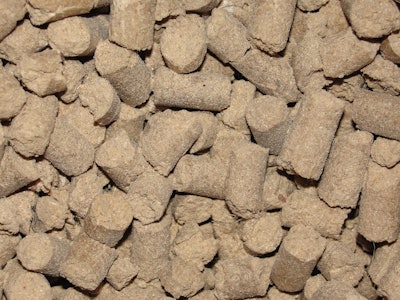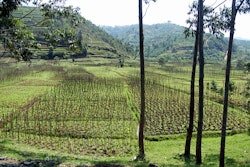
There it was, piled high in the center of the table. Six months of testing, sampling and screening and there it was — the perfect pellet.
Let’s journey back to where it all began. A year earlier, we launched a new pellet feed and things were going great. We had great packaging, pricing and promotions.
We had a targeted customer that was excited about our product and spreading the word on social media. The product was innovative, which meant we were first to the market — Rule No. 1 of the 22 Immutable Laws of Marketing achieved. Life in the sales world couldn’t get any better, but it could get worse.
The complaint calls started gradually. We got just a single customer complaint at first, then another a few days later. Pellet quality calls were always a major discomfort in the daily routine of feed sales. And when it was on one of your primary products, it was a big discomfort that had to be dealt with. Soon, the sales team network was calling each other daily, then hourly as we received pellet quality complaints. We tried to determine if it was isolated or a widespread issue.
With baggies of poor quality pellets in hand, we descended on the operations manager, first individually and eventually in groups.
We spent the first couple weeks taking shots in the dark as to what the problem might be. We added a binder. We reformulated it several times to increase starch and lower fiber. We added certain ingredients we felt would help. Some changes helped a little, some not at all.
Before getting too far into our journey — the questions kept coming up:
How do good pellets go bad? And who is involved in this journey?
Good questions. In the search for the root cause, our journey took us to all parts of our feed business: purchasing, production, formulation, distribution and the customer. It ended back in that conference room — with a pile of pellets on the table.
Purchasing
How is purchasing involved?
- Consistent quality of inputs/ingredients give the ability for consistent pelleting.
- Changing suppliers of products.Distiller’s dried grains (DDGS) can vary widely and affect pellet quality
widely — Midds aren’t midds! The 100-year-old flour mill leaves a lot of flour behind, which is like glue. The brand-new flour mill extracts every last bit of flour, which leaves mostly fiber and tends to lower pellet quality. - Keep in mind that ingredient samples sent by the ingredient salesperson don’t always represent what you actually get. I once bought some really nice looking magnesium oxide, based on a sample sent from a new supplier. The first three semis we received weren’t even close to the samples. The new supplier became an ex-supplier quickly.
Formulation
How is formulation involved?
- Consistency again is the key. We knew we needed to reformulate and use the most readily available commodities as prices changed. However, if we alter the formula too often and production can’t get the parameters set on their end before the formula changes again, we get inconsistent pellet quality.
- Fat, fiber and rock (mineral) levels had to be balanced correctly. The starch that gelatinizes and becomes the glue to hold the pellet together needs to be within a certain ratio with other nutrients.
Manufacturing
A lot of pressure is put on our production teams as they hold the keys to many of the important factors in pellet quality. Here are a few things to think about:
- Grind size of the grains, moisture level going in, moisture level added, steam temperature, duration of steam, quality of the steam, duration in the conditioner, pellet length, rollers set correctly, thickness of the die, pellet length, pellet diameter, handling conveyors and augers within the feed mill.
- Cooler settings are a whole science unto itself. Between vertical and horizontal, bed thickness and airflow, length of time in the cooler to ambient temperature around the cooler, you have a series of checks and balances to think through.
To bind or not to bind?
Over the years, binders have been introduced to help hold the pellets together. Some work better than others under certain circumstances. While this is not a discussion on whether they work or not — they do. However, you need to know how they work and under which condition each one works better. They are also not a miracle cure for all the other factors. You can’t take a 12% high-fat dairy feed that feels like wet sand, throw in 50# of binder and expect to have a bullet come out the other end of the pellet mill.
Distribution
Take a look at auger size and auger speed on your delivery trucks. A 6-inch auger with poor flighting is going to chew up pellets a lot faster than a new 12-inch auger. Auger speed is important. A driver can certainly get in a hurry, crank up the speed of the auger and turn your pellet into a nice powdery mash.
On-farm handling
For on-farm handling take into account the same considerations as your feed trucks. Look at their bins or bagged holding area. Is the feed getting wet somehow? Are they rotating bags? Did fines build up on the side of the bin? Are they cleaning it out between bulk deliveries? Are they using small 4-inch augers on their bins or feed wagons? Once it hits the feeder or feed bunks, is it staying dry, getting cleaned out and not hanging up in the feeders?
Sales team
After spending 20 years searching for the perfect pellet, I can confidently say that it’s not a production thing. It’s an “Everybody” thing. Often, we like to bring in the on farm sample of feed that is full of fines and toss it on our production managers’ desks. We feel like we did our part by bringing it in and letting them know “They” have a problem. After all, you’ve got work to do to get some feed sold — true, you do. But your customer needs your help. Solving the mystery of how to get this feed fixed can involve several members of the team, which takes me back to my story.
Tinkering
We started our process by what I call “tinkering.” We guessed it was an ingredient issue — so, we reformulated. That helped a little but didn’t get us to our goal. Then we thought it was a cooler issue. So, we made adjustments there, and again, small improvement.
Our complaints trailed off. Had we fixed the problem? Had customers quit complaining? Or did we just lose a bunch of customers? It was hard to tell.
Then, we suffered a major setback. It turned out to be a new source of DDGS that came from a new ethanol production facility. These new DDGs destroyed pellet quality, which required reformulation.
Teamwork works
Soon we realized we could learn more and get better results faster if we involved the whole team in the journey: sales, operations, formulation, distribution and purchasing. We gained more insight by getting our collective experience working on the problem. It also built teamwork as we were no longer “tinkering” and we tended to do less finger pointing when together as a group.
The only down side of involving this many people in meetings was the time it took away from everyone doing our respective jobs. While this is a legitimate concern, I will tell you that one quality issue with a customer can take a lot longer than what we spent on these audits — not to mention, the cost of losing a customer because you can’t get your problems fixed. We were all busy people and kept our meetings focused, action oriented and results based to keep us from wasting our time.
When you are out selling, and have to stop your progress to go handle a fines or quality complaint, frustration grows and efficiency drops. You drop what you’re doing to take care of the problem. You begin to think about how much time and work it took to get the customer sold, the production effort to make the feed, the delivery driver that drove the miles to get it there and now we risk losing it all. Trust me, it’s worth the time to assemble the whole team and get it right. Pellet quality is one of those factors that is part science, part art form. It takes a team approach to solve. If all aspects aren’t considered, you can spend an eternity trying to tweak things to no avail.
The journey
With the problem fixed for the immediate future, we realized we needed to meet regularly throughout the year to monitor product quality on all of our key products and our higher risk products. By that, I am referring to those that had a high likelihood of variable quality — crumble and textured feeds for example. The camaraderie this built amongst the team and the confidence it gave the sales team in their products and their peers cannot be put into financial terms. However, I can tell you this team scored extremely high on engagement scores and had outstanding sales results.


















